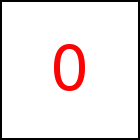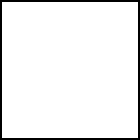External 3D Models - taccGL™ Tutorial
In section Basic 3D Models we have already
explained how to show and animate an external 3D Model. This
section and its subsections introduces various features of taccgl™
w.r.t. 3D models such as how to modify, align, color, and texture
models. In addition there are subsections explaining how to best
export 3D models from modelling porgrams, how to put them on a
web server, and how to more efficiently download them.
Selecting Parts of a Scene
almost empty div element with id="ex20"
The examples shown so far used the scene method to display a 3D model of a complete scene.
In addition there is the objs to pick some of the objects from the scene
for display.
In the first two examples below objs gets the name of the object to display.
Actually objs takes a regular expression as parameter and includes all objects
of the 3D model that match. So it is, as in the third example below, possible to
select multiple objects, separating the names with "|".
var to=taccgl. objFile().read('/objtest/taccgldoc.obj',false); to.mtl.ambientAdjust(0.4); taccgl.actor("ex20",to.objs("Torus")) .modFit() .rotateMiddle(0.7,0.0,0.7) .dur(3).start(); | RUN |
var to=taccgl. objFile().read('/objtest/taccgldoc.obj',false); to.mtl.ambientAdjust(0.4); taccgl.actor("ex20",to.objs("Cylinder")) .modFit() .rotateMiddle(0.7,0.7,0) .dur(3).start(); | RUN |
var to=taccgl. objFile().read('/objtest/taccgldoc.obj',false); to.mtl.ambientAdjust(0.4); taccgl.actor("ex20",to.objs("Cylinder|Sphere")) .modFit() .rotateMiddle(0.7,0.7,0) .dur(3).start(); | RUN |
This technique has various applications: It is possible to have various objects for use in differenct places
in one model, thereby reducing the number of model files that need to be maintained and downloaded.
The taccgldoc.obj for example contains various objects, e.g. a Sphere, a Cylinder, and a box.
You can also design a 3D model with exchangable parts, e.g. a cupboard with either and open or a closed
door and then select with objs either to include the close or the open door plus the rest
of the cupboard.
almost empty div element with id="ex40"
The next example shows another application which is to animate various parts
of a model differently. Basically the idea is to have multiple taccgl™ transitions,
each using the same 3D model at the same HTML element, but selecting different parts
of the model and having different animations.
var to=taccgl. objFile().read('/objtest/taccgldoc.obj',false); to.mtl.ambientAdjust(0.4); taccgl.actor("ex40",to.objs("Sphere|Torus")) .modFit() .rotateMiddle(0.7,0.7,0) .dur(3).start(); taccgl.actor("ex40",to.objs("Cylinder|Icosphere")) .modFit() .rotateMiddle(-0.7,-0.7,1) .dur(3).start(); | RUN |
Scaling and Aligning 3D Models with HTML Elements (modFit)
A 3D scene displayed with taccgl™ must either already have the right
size or it can be resized and aligned with the placehodler HTML elements.
See the box below for the rules of manual alignment and the rest
of the section using automatic alignment.
When showing a 3D Model using
a placeholder HTML element and not using any aligment or scaling
methods, the (0,0,0) point of the 3D model is mapped to the top left
corner of the HTML element, the (1,0,0) point to the top right
corner, and the (0,1,0) point to the bottom left corner. taccgl™
assumes a depth d of the object identical to the height of
the HTML elements. The point (0,0,-1) is mapped to a
point d pixels "in front" of the top left corner of the
HTML element. The 3D model can exceed the unit cube, but then
probably will exceed the placeholder element. If the placeholder
element is not quadratic the 3D models aspect ration will change and
the model look distorted.
Both examples below do not use automatic scaling. The first one fits well with the placeholder HTML
since the 3D model has the size of a unit cube. You will notice, however, that the model is not cubic
which comes from the fact that the model is stretched according to the underlying placeholder HTML,
which is not quadratic. The second example does not fit at all with the placeholder, since the
3D model is much bigger than the unit cube
var to=taccgl. objFile().read('/tutorial/obj/secondExample.obj',false); taccgl.a("ex60",to.scene()) .dur(3).start(); | RUN |
var to=taccgl. objFile().read('/objtest/taccgldoc.obj',false); taccgl.a("ex60",to.objs("Cube")) .dur(3).start(); | RUN |
almost empty div element with id="ex60"
Automatic scaling and alignment is done using modfit which may or may not have parameters.
If none of the parameters is given, then the 3D model is aligned and stretched to exactly fit the HTML
element. More precisely the HTML element is extended to a box,
whereby the HTML element is the front plane
of the box. The box has a depth d, which is per default identical to the height of the HTML element.
The following 2 examples extend the previous 2 examples by using modfit without parameters.
You will notice, that modfit does not change the first example but the second example
is scaled and aligned to fit into the box of the HTML element.
var to=taccgl. objFile().read('/tutorial/obj/secondExample.obj',false); taccgl.a("ex80",to.scene()) . modFit() .dur(3).start(); | RUN |
var to=taccgl. objFile().read('/objtest/taccgldoc.obj',false); taccgl.a("ex80",to.objs("Cube")) . modFit() .dur(3).start(); | RUN |
almost empty div element with id="ex80"
The following examples use modfit with an alignment argument.
If used, the 3D model is resized to fit the HTML element while keeping its aspect ratio.
The alignment parameter is a 3 letter string, the first letter standing for alignment
in x-direction, the second for y-direction, etc. So for example "ltf" means left-top-front
and "mmm" middle-middle-middle alignment.
While viewing the
following examples it is useful to show the box as well box,
var to=taccgl. objFile().read('/objtest/taccgldoc.obj',false); taccgl.a("ex80",to.objs("Sphere")) .modFit("ltf") .dur(3).start(); | RUN |
var to=taccgl. objFile().read('/objtest/taccgldoc.obj',false); taccgl.a("ex80",to.objs("Sphere")) .modFit("mmm") .dur(3).start(); | RUN |
var to=taccgl. objFile().read('/objtest/taccgldoc.obj',false); taccgl.a("ex80",to.objs(".*")) .modFit("mmm") .dur(3).start(); | RUN |
var to=taccgl. objFile().read('/objtest/roundcube/roundcube1.obj',false); taccgl.a("ex80",to.scene()) .modFit("mmm") .dur(3).start(); | RUN |
var to=taccgl. objFile().read('/tutorial/obj/secondExample.obj',false); taccgl.a("ex80",to.scene()) .modFit("mmm" ) .dur(3).start(); | RUN |
var to=taccgl. objFile().read('/objtest/taccgldoc.obj',false); taccgl.a("ex80",to.objs("Sphere")) .modFit("mmF") .dur(3).start(); | RUN |
var to=taccgl. objFile().read('/objtest/taccgldoc.obj',false); taccgl.a("ex80",to.objs("Sphere")) .modFit("mTm") .dur(3).start(); | RUN |
There are many more alignment option described in the manual: See modfit.
For example the alignments used in the last 2 examples above:
"mmF" means middle-middle-in-front-of-the-box and "mTm" middle-on-Top-of-the-box-middle.
Note that the second example above rotates around the center of the placeholder
HTML element. WebGL™ is a trademark of the Khronos Group Inc.
|





